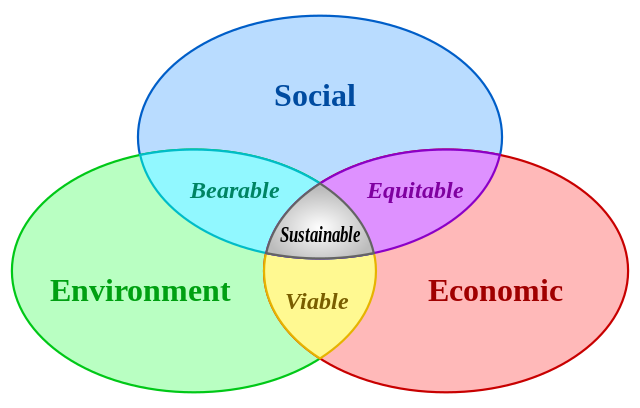My hope in starting this blog is to provide practical advise, based on research and first-hand experience, to anyone who is interested in living a more balanced, sustainable life-style. Before starting, I thought it might be helpful to define sustainability, and it's core elements.
Best,
Paula
Wikipedia's Definition
Sustainability is the capacity to endure. In ecology the word describes how biological systems remain diverse and productive over time. For humans it is the potential for long-term maintenance of well being, which in turn depends on the maintenance of the natural world and natural resources.Ways of living more sustainably can take many forms from reorganising living conditions (e.g., ecovillages, eco-municipalities and sustainable cities), reappraising economic sectors (permaculture, green building,sustainable agriculture), or work practices (sustainable architecture), using science to develop new technologies (green technologies,renewable energy), to adjustments in individual lifestyles that conserve natural resources.
The Formal Definition-
The word sustainability is derived from the Latin sustinere (tenere, to hold; sus, up). Dictionaries provide more than ten meanings for sustain, the main ones being to “maintain", "support", or "endure”.[6][7]
Sustainability's link with Sustainable Development-
Since the 1980s sustainability has been used more in the sense of human sustainability on planet Earth and this has resulted in the most widely quoted definition of sustainability and sustainable development, that of the Brundtland Commission of the United Nations on March 20, 1987:
“sustainable development is development that meets the needs of the present without compromising the ability of future generations to meet their own needs.”[8]
2005 World Summit Definition-
Sustainable development was noted to require the reconciliation of environmental,social and economic demands - the "three pillars" of sustainability.[10] This view has been expressed as an illustration using three overlapping ellipses indicating that the three pillars of sustainability are not mutually exclusive and can be mutually reinforcing.[11
